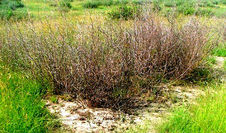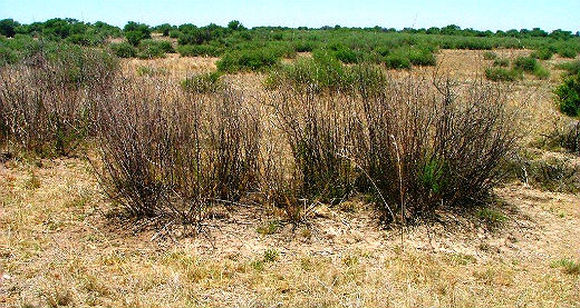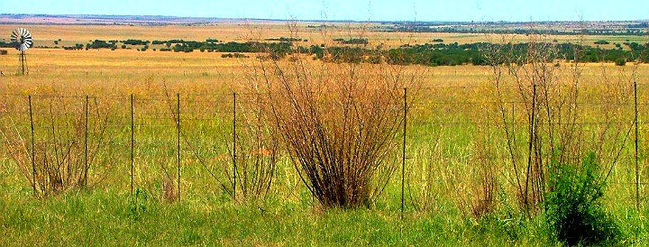
The natural grazing on my farm, adjacent to Koppies dam in the Free State, is being taken over by "wild esparagus" / "katstert". I have tried several herbicides but with no success. What can you recommend and when would be the correct time in the year to apply?
1st Reply:
"Can you please expand as to which products you have tried with what methods and rates of application?"
More Details about the Enquiry:
I have sprayed with Round-up, Hormoban and Turfweeder at the recommended strengths (sprayed the same plants 2-3 times between December and May this year) and have tried also Chopper as a spot treatment at the plant roots (in February 2010).
All treated plants recovered within weeks and although they are not as green as the untreated plants during the winter, I expect them to be back to normal again this summer.
If you have had any experience with wild esparagus, you will know that it is a very difficult plant to kill, it has "bulbs" and an extensive rooting system. It has needles as apposed to broad leaves. The seeds are being spread by birds that eat their berries. If I dig them out, I just prepare a seedbed for the millions of seeds dropped around the plant.
I need a herbicide (or natural's solution - parasite or disease, as fire also does not affect the plants) that will stop this invasion. I am prepared to sacrifice natural grass species, as I am confident that they will return with time, as the plant is speading uncontrolably.
Chopper (and Hatchet) is registered, but even the guy who did the original R&D admits that results are erratic at best. One has to admit that Katbos is a worthy opponent though and the root system probably has a lot to do with it.
I am attaching two labels for chemicals which are registered, one being Browser, the other Limpopo 200 GG. Browser is applied as a 2% foliar spray with 0,5% mineral oil, like our H&R Crop Oil. Adding a colourant helps. It does affect grass to a certain extent, but the latter recovers within a year or so. Application would be later in the season, once the new foliage is fully developed. I did trials as late as April in the Kroonstad district, but depending on rain, December would be OK. One more thing: small or scattered plants can be treated with knapsack sprayers, but for dense thickets or large, well established plants, one needs to apply Browser with a fire fighter or something capable of delivering high volumes.
Limpopo GG is applied as a soil treatment within the base of the plant. It too, affects grass and this damage sticks around a little longer, but also recovers in time. Here one needs rain to leach the product into the root zone of target plants and the more rain it gets, the better. The only problem is that Katbos seem to prefer soil high in clay and as you know, root absorbed herbicides battle under such conditions. That is exactly why I developed a foliar treatment, such as Browser. Be that as it may, both products do work, but FOLLOW-UP TREATMENTS IN THE NEXT SUMMER, IS ESSENTIAL. I’m not aware of any chemical being 100% effective, first time.
I need to add that while some re-growth did occur, some of it died back due to the residual effect of picloram in the soil. Picloram stays active within the plant too, even for a year or so. If the plant does not die within the first summer, it may do so during the next, but chances are that retreatment will be required on large plants. I also suggest one treats a minimum of 90% of all green foliage (shoots and whatever counts as leaves on this plant). Treat to point of run-off. Overspray onto grass is unavoidable.
I know Katbos is taking over large areas and Koppies is not too far off. Hence I’m willing to assist if I can. Let me know if this is on.



 RSS Feed
RSS Feed

